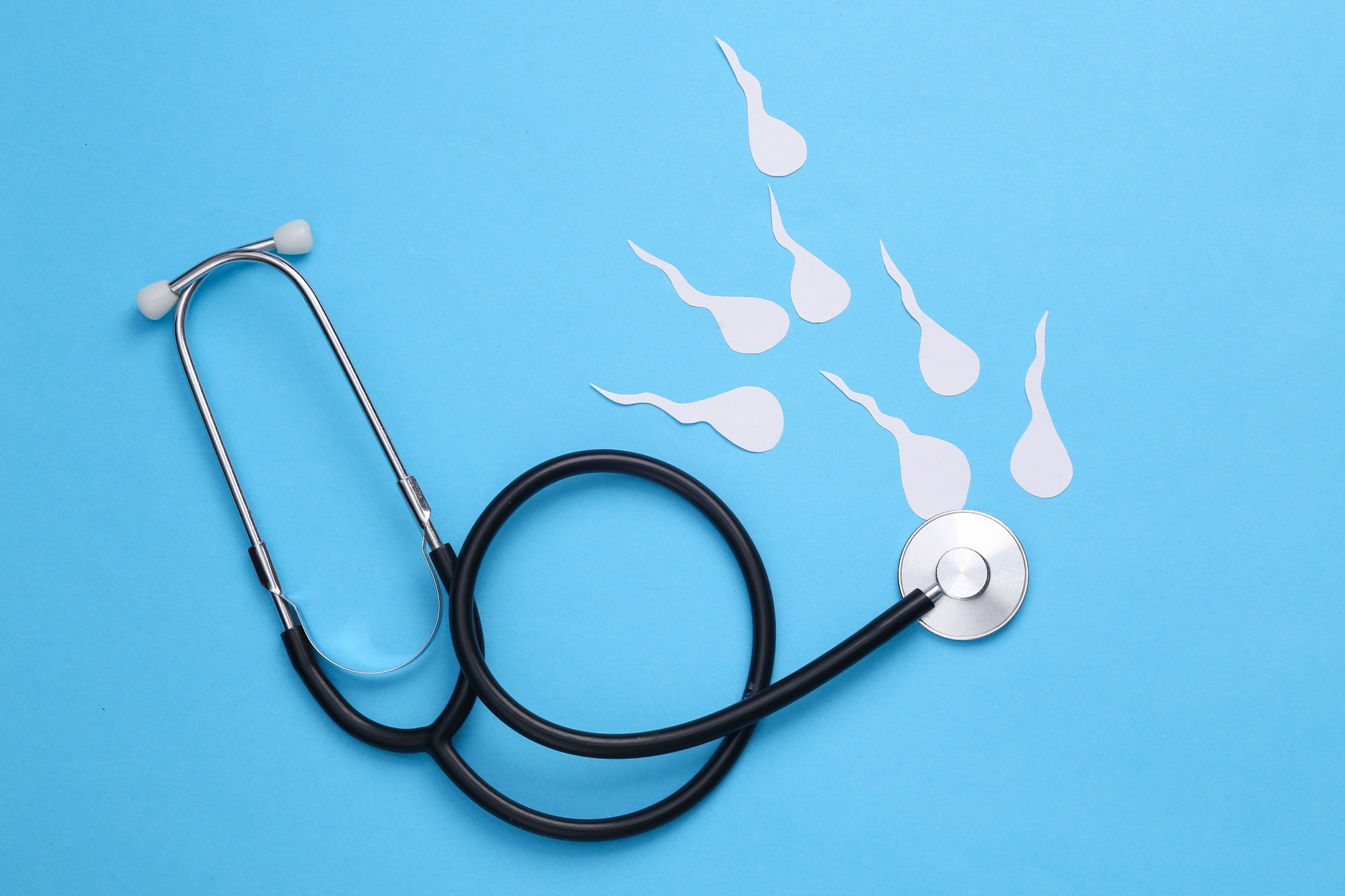In a recent review published in the Cell Death Discovery Journal, researchers explored the association between ferroptosis and male reproductive failure, emphasizing the need for tailored therapies and preventative efforts.
 Study: Emerging roles of ferroptosis in male reproductive diseases. Image Credit: Vladimir Sukhachev/Shutterstock.com
Study: Emerging roles of ferroptosis in male reproductive diseases. Image Credit: Vladimir Sukhachev/Shutterstock.com
Background
Infertility is a rising concern globally, warranting research to identify novel targets that can enable the development of tailored therapy and enhance infertility care.
Research has linked ferroptosis to male reproductive disorders. Iron is required for spermatogenesis and testosterone synthesis; however, excessive amounts of iron can affect sperm quality and lead to reproductive dysfunction.
About the review
In the present review, researchers elucidated ferroptosis-induced male reproductive failure, the physiological role of iron regulation in male reproductive function, and its potential targets in testicular damage.
An Introduction to ferroptosis
Lipid peroxidation resulting from iron buildup leads to ferroptosis, a type of non-apoptotic cell death. It is engaged in various disease situations, including neurodegeneration, cancerization, ulcerative colitis, and kidney and liver ischemia-reperfusion damage. Ferroptosis treatment might be a potential technique for treating people with reproductive problems.
Iron metabolic imbalances cause ferroptosis, which results in elevated intracellular ferrous iron levels and iron overload. The absence of lysophosphatidylcholine acyltransferase 3 (LPCAT3) or acyl-coenzyme A indicates ferroptosis, as is lipid peroxidation.
A synthetase long-chain family member 4 (ACSL4) improves ferroptosis resistance and lowers ferroptosis lipid peroxidation.
The solute carrier family 7member 11 (SLC7A11 or xCT)/glutathione peroxidase 4 (GPX4) pathway prevents ferroptosis by balancing oxidative stress and antioxidant defense. A glutathione (GSH) synthesis reduction affects GPX4 activity and induces ferroptosis.
The ferroptosis suppressor protein 1 (FSP1)/coenzyme Q10 (CoQ100) axis and the guanosine triphosphate cyclohydrolase 1 (GCH1)/tetrahydrobiopterin (BH4) axis reduce ferroptosis by converting CoQ10 to ubiquitinol (CoQ10H2).
Mitochondria, semi-autonomous cell organelles, function via distinct metabolic pathways that prevent ferroptosis. Recent research has indicated that mitochondrial damage is a defining feature of ferroptosis. Proteins involved in Fe-S binding, such as nuclear assembly factor 1 (NAF1), assist in iron transport in the mitochondria and suppress ferroptosis by shielding the cell organelles from lipid peroxidation in acute renal damage and tumor cells.
Through redox processes created by glucose, acetyl-CoA transports electrons to electron transport chains, creating adenine triphosphate (ATP) via oxidative phosphorylation and reactive oxygen species (ROS), which trigger ferroptosis.
Mitochondrial GPX4 helps prevent ferroptosis by collaborating with the glycerol-3-phosphate dehydrogenase 2 (GPD2)/CoQ10H2 and dihydroorotate dehydrogenase/CoQ10H2 pathways within the inner mitochondrial membrane.
Ferroptosis-induced biological reactions in testicular damage
Ferroptosis leads to cellular death in Sertoli cells due to oxygen-glucose deprivation and reoxygenation damage associated with several male reproductive illnesses. Thus, ferroptosis can adversely affect the male reproductive system.
Excessive autophagy can cause ferroptosis, whereas zinc can cause ferroptosis by controlling mitochondrial autophagy.
In rats, hexavalent chromium produces ferroptosis and testicular autophagy. Classic ferroptotic activators like ML-210 and inhibitors like ferrostatin-1 (Fer-1) affect autophagic flux within the cells, resulting in testicular damage.
Testicular ferroptosis can be caused by bad lifestyle behaviors such as drinking, smoking, and not sleeping enough, which can impair the quality of spermatozoa and lead to male infertility.
Nicotine disrupts the blood-testis barrier, affecting male reproductive function, and the nuclear factor erythroid 2-related factor 2 (NRF2) promotes ferroptosis induced by nicotine. Ferrostatin-1 restores testicular harm, implying that ferroptosis is caused by smoking.
Environmental variables such as 2.5-micron-sized particulate matter, bisphenol A, di-2-ethylhexyl phthalate (DEHP), and HT-2 toxins can also trigger testicular ferroptosis.
Mycotoxins enhance testicular lipid peroxidation by suppressing the expression of GPX4, SLC7A11, and NRF2. Through the buildup of ROS, HT-2 toxins reduce Leydig cell growth and testosterone release and promote ferroptosis and death, resulting in lipid peroxidation. Heavy metals can also cause testicular damage.
Cadmium alters the pubertal mouse's antioxidant signaling and iron metabolism, causes ferroptosis in spermatogonocyte cells, and inhibits spermatogenesis and testicular development.
The involvement of mammalian target of the rapamycin (mTOR)-mediated autophagy can be explained by ferroptosis caused by hexavalent chromium and copper.
Arsenite causes lipid peroxidation and mitochondrial dysfunction in testicular cells. Many regularly used medicines, such as Busulfan, which destroys developing germ cells and inhibits the production of spermatozoa, can cause testicular damage and male infertility.
However, the link between ferroptosis and other types of cell death is still being researched. Genetic abnormalities, environmental variables, heavy metals, and medication usage can all impact ferroptosis.
Based on the review findings, ferroptosis, a type of cellular death associated with male reproductive failure, is a novel therapy target.
Iron chelation treatment and antioxidants can help prevent and relieve symptoms, but further study is needed to investigate whether specific blocking can correct testicular dysfunction and restore fertility. Predictive biomarkers for ferroptosis and male reproductive dysregulation are also required.